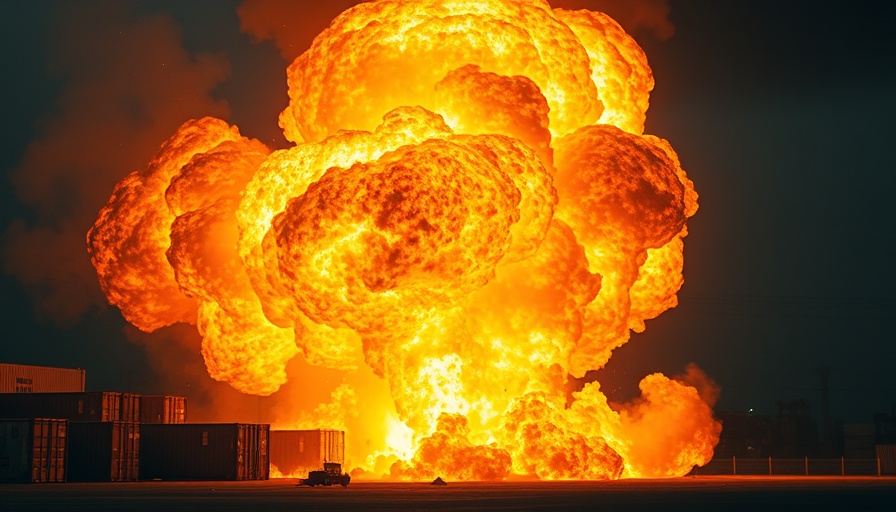
Unpacking the Recent Explosion in Iran: A Closer Look
A significant explosion in Iran has raised numerous questions and allegations surrounding its origins. A senior Iranian official recently claimed that explosive materials were planted within shipping containers destined for Iran, leading to a catastrophic event at a major port. The explosion, which claimed the lives of 36 individuals, has been a focal point of tension, particularly regarding its alleged connections to Israel. This incident, marking a deadly day for the nation, occurred simultaneously at four different sites, further complicating the narrative.
What Really Happened? The Explosion Details
Reports indicate that prior to the explosion, there was a fire in at least one container believed to have held hazardous chemicals. The sighting of the fire has prompted authorities to explore different angles amidst the explosive comments made by state officials. Eyewitnesses described the sounds of the blast echoing far and wide, with effects felt 50 kilometers away, hinting at the explosion's magnitude. With much of Iran’s imports processed through this port, the implications of the explosion extend beyond immediate casualties to potential economic repercussions.
The Israeli Allegation: Contextualizing the Claims
The Iranian official's assertion of Israeli involvement is not unprecedented; tensions between Iran and Israel have been high, often resulting in accusations from both sides. For instance, similar claims were made following previous incidents in the region, where both nations accused each other of espionage and attacks. These allegations contribute to a complex geopolitical environment in which every action is scrutinized, and motivations are questioned, particularly during sensitive times.
Implications for Global Politics and Local Security
The label of Israeli involvement in such explosive incidents can ignite further hostilities and narratives of victimization within Iranian political discourse. While some might view these claims as an attempt to unify the nation under a common foe, others may interpret them through the lens of stretching the narrative of geopolitical strife. As a humanitarian-focused audience, understanding the implications of these narratives is vital in promoting peace and interfaith dialogues amidst the violence.
Humanitarian Focus: Supporting the Affected
In the wake of such tragedies, the humanitarian aspect should not be overlooked. With 700 reported injuries from the explosion, institutions need to prepare for both immediate humanitarian aid and long-term support as families mourn their loved ones. The role of NGOs and churches is crucial at this moment for providing necessary resources and emotional support to those grappling with loss and trauma.
Reflection: Faith Amidst Crisis
As followers of Christ, it is vital for mission-minded individuals to reflect on the spiritual implications of these events. The intersection of faith and politics can lead to fractious divisions; however, it also offers pathways for interfaith dialogue and understanding. There is a call for Christians to stand empathetically with those affected by violence around the world, praying for peace and calling for forgiveness in the midst of rising tensions.
What Can You Do?
Engagement in advocacy and support for peacebuilding initiatives can significantly contribute to alleviating tensions in conflict-ridden areas. Consider promoting or participating in organizations dedicated to humanitarian efforts, interfaith dialogues, and advocacy that foster peace. Each action contributes to a larger narrative aimed at healing and reconciliation in the face of tragic events.
As we reflect on these ongoing struggles in Iran and the surrounding Middle Eastern region, let us remain committed to fostering understanding and compassion in the face of strife.
 Add Row
Add Row  Add
Add 








Write A Comment